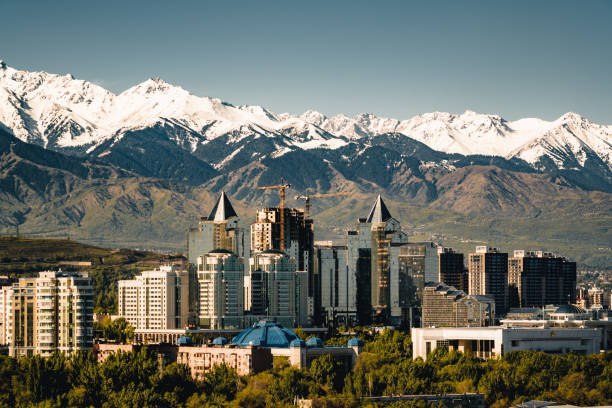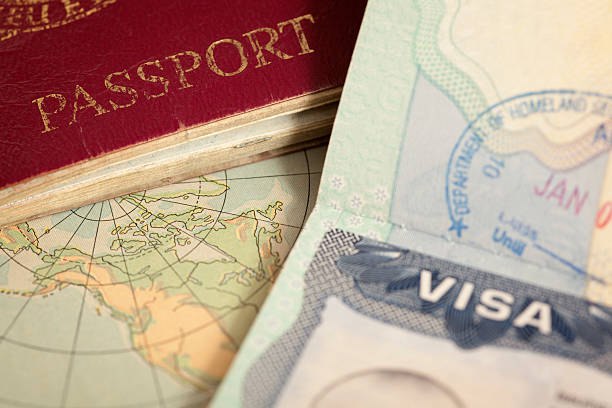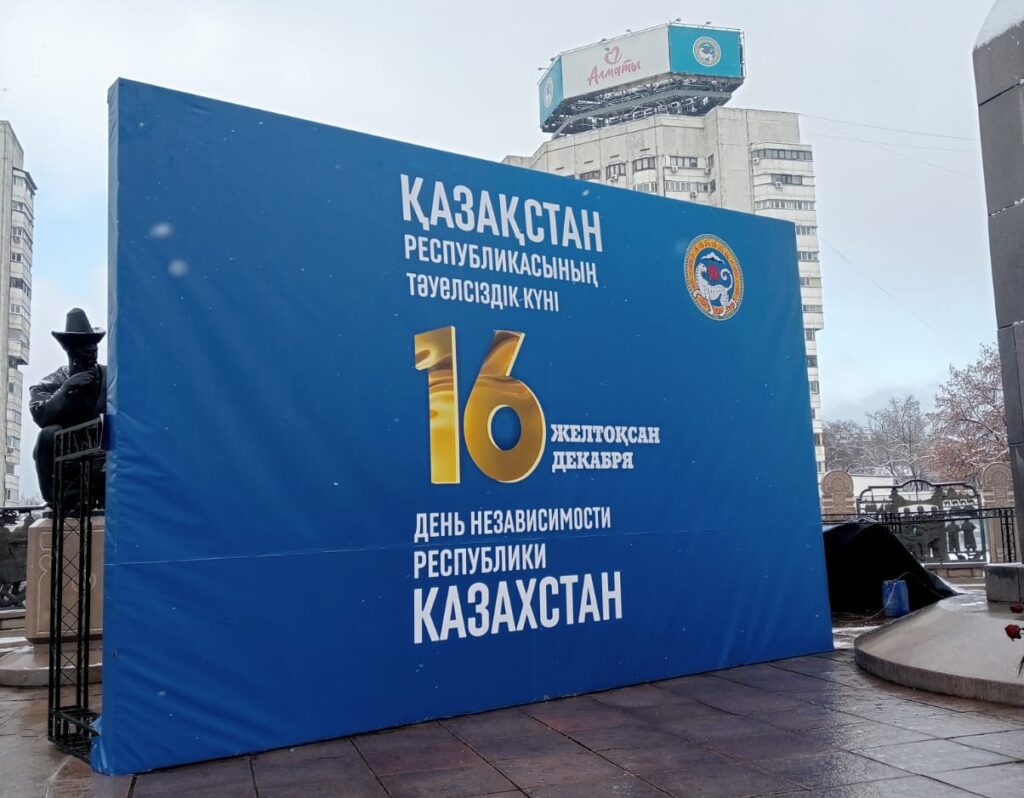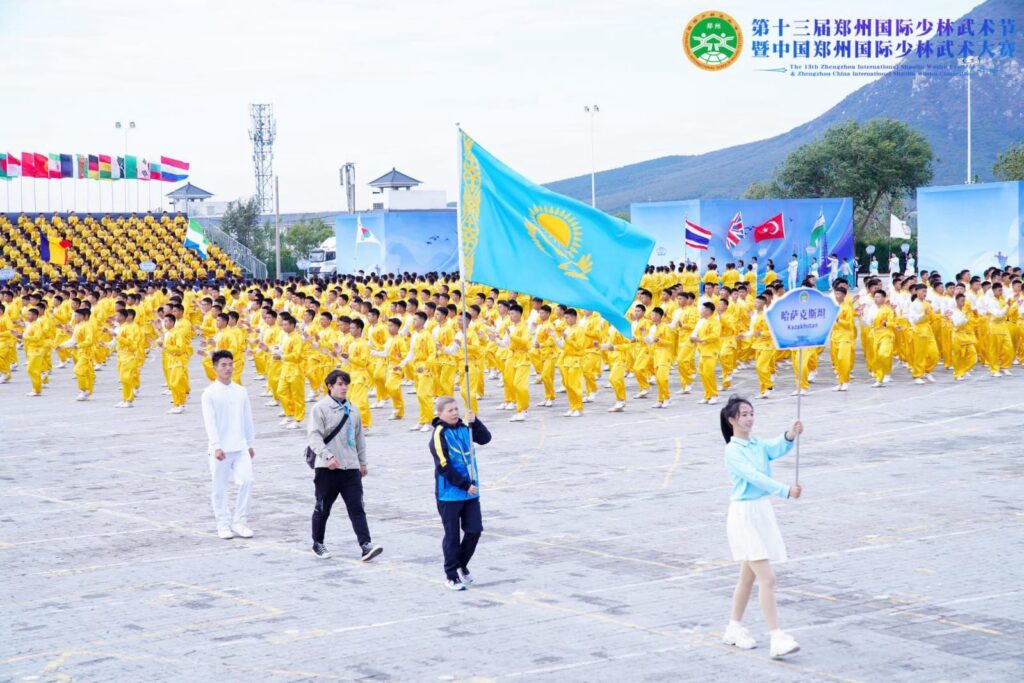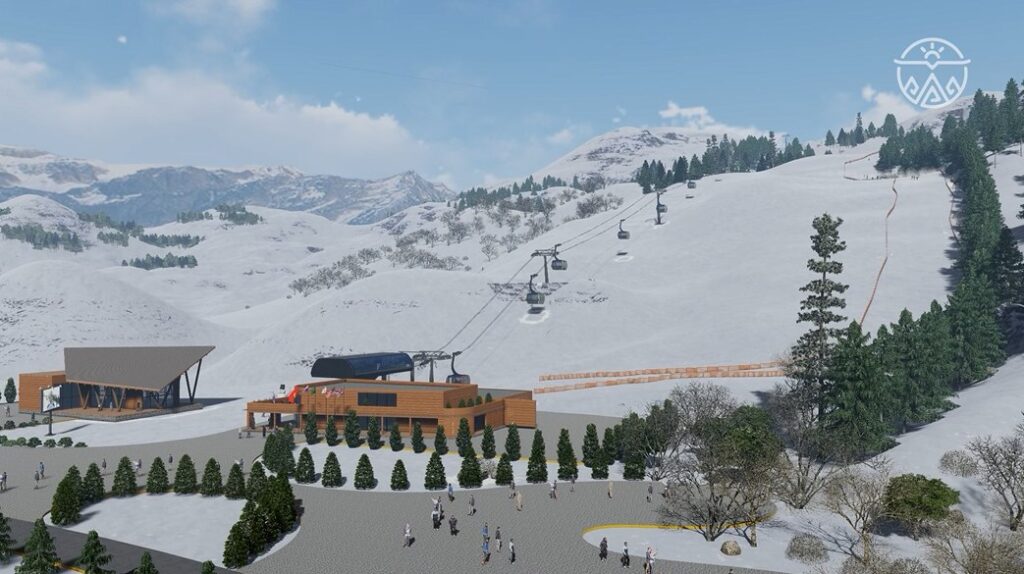Under the banner of “Silk Road Treasures”, TCA’s people -journalists, editors, authors- share their personal experiences of Central Asia and her people, and by listing their favorite places, literature, films, architecture and archaeological sites, alongside encounters with customs and traditions, provide pointers for readers wishing to visit the region.
Vagit Ismailov, Journalist
The first thing a travelers notice when descending at Almaty International Airport are the towering snow-capped peaks of the Zailiyskiy Alatau mountains.
However, alongside their majestic presence which make this city unique, the mountains harbour a constant threat which anyone who has experienced an earthquake whilst inside a high-rise building, will both well understand and fear.
Almaty, capital of Kazakhstan until 1997, is one of those cities whose growth is independent of either metropolitan status or the presence of large enterprises.
Now one of the most dynamic cities in the post-Soviet space and, perhaps, one of the most prosperous in Central Asia, the ever-evolving city absorbs money from other regions and boasts a wealth of amenities, high-end restaurants and cosy cafes to welcome customers day and night.
Inevitably, the population continues to rise and as commented by one of Almaty’s akims (mayors), every day, the number of people entering the city is equivalent to Latvia’s population of over 1.5 million. As a result, the roads are constantly clogged with traffic, again showing the megacity’s restless energy and the potential for further growth.
Amidst the boom in development which has spurred the construction of modern residential and business complexes, the city center remains quintessentially Soviet in style, flanked by streets of familiar communist apartment blocs from the sixties and seventies. Today’s new builds reach for the sky but under the Soviet regime, high-rise construction was forbidden in Almaty. The only exception was the Kazakhstan Hotel, which standing 102 meters high, is now the city’s third tallest building. Constructed in 1977, it was designed to withstand zone 9-point seismic activity, but nevertheless, its survival of several earthquakes is regarded as miraculous.
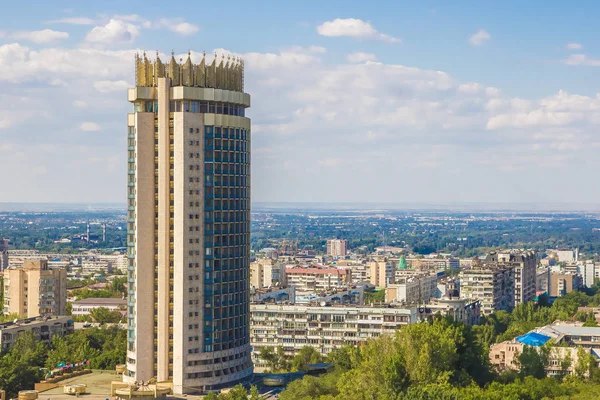
Hotel “Kazakhstan” Image: @iStock
The proximity of the mountains and unspoilt natural landscape, provide residents and tourists alike, a perfect place to relax and enjoy the great outdoors. The nearby resorts of Shymbulak and Medeo, home to the world’s largest ice rink which sits like a diamond in a box of green velvet, offer a range of winter sports facilities. Cable cars traversing deep gorges, operate all year round, aiding access to the high pastures, and panoramic views of the Tien Shan ranges, and numerous, graded hiking trails wind through passes to lakes and waterfalls. Scenery aside, visitors can experience more of what Kazakhstan has to offer by sampling local fayre in various venues and watching demonstrations of eagle hunting, and for lovers of antiquity, there are petroglyphs to be discovered, carved on red rock, and the famous Boroldai Saka Burial mounds, dating back to V-VIII BC.
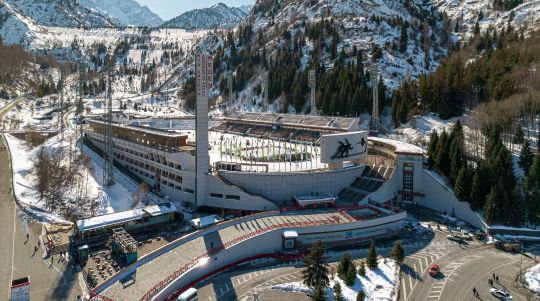
Medeo. Image: @iStock
But the threat of the Zailiyskiy Alatau is ever-present. In 1887, an earthquake of 9-10 points wiped the town off the face of the earth. The authorities discussed moving Verny (the Imperial Russian name for Almaty) to a safer place, but architect Andrei Zenkov and his colleagues convinced them instead, to start seismic strengthening of buildings.
Using the latest technologies of the time, the Ascension Cathedral was built, and at 54 meters, is one of the tallest wooden churches in the world and a spiritual symbol of Orthodoxy in Central Asia. In 1910, the city was hit be another powerful earthquake. Architect Zenkov ran through the crumbling, panic-stricken city, afraid to see his brainchild in ruins, but the cathedral survived, and today, its elegant facade sits like a jewel in one of Almaty’s best parks.
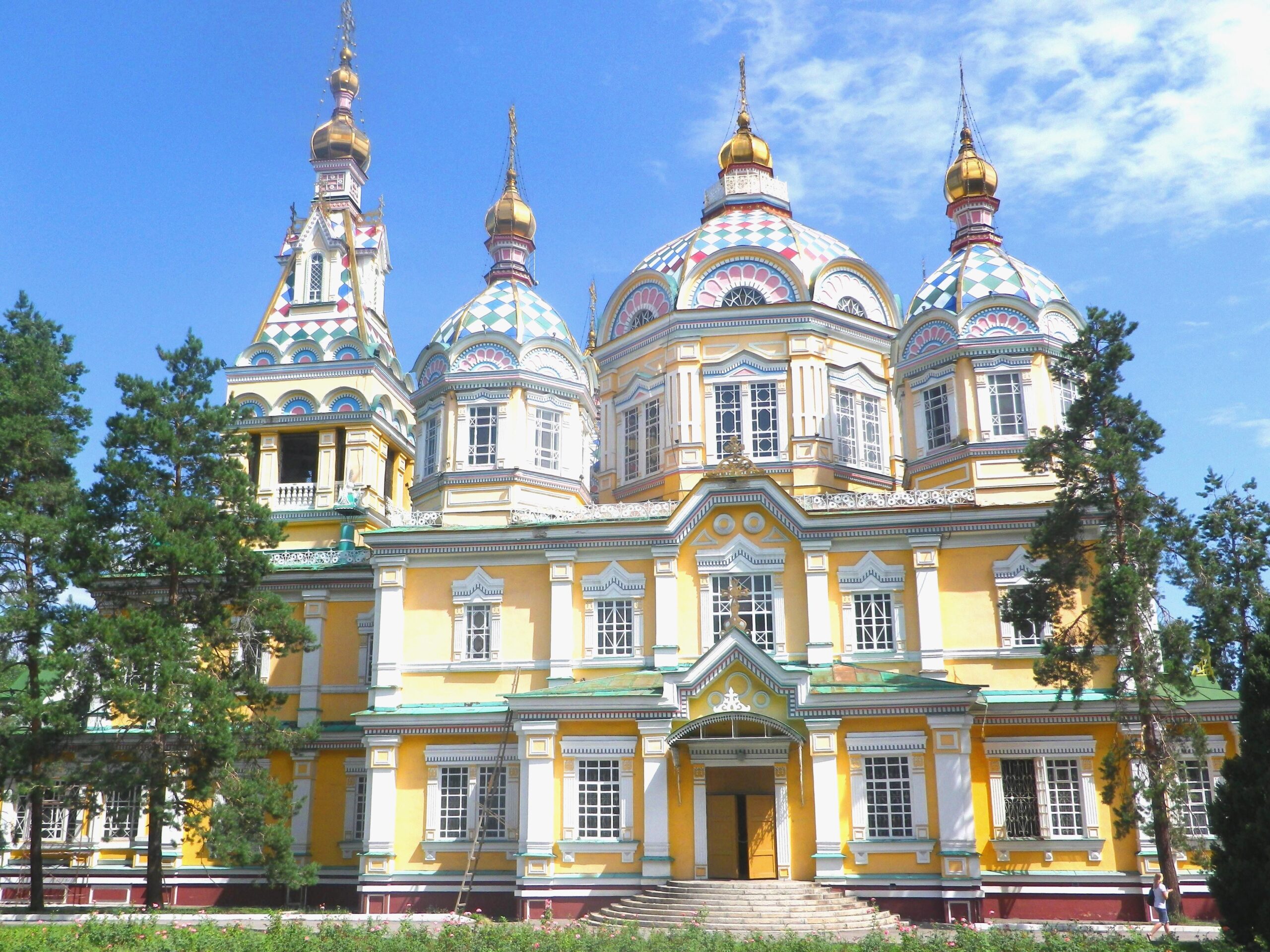
Ascension Cathedral, Image: TCA, Stephen M. Bland
The fate of the cathedral and other stories about earthquakes in Almaty are by no means the stuff of legends. In January and March 2024, the city was again shaken by 5-6 point earthquakes. Inhabitants of high-rise buildings were terrified that they would not have time to get out. Walls and furniture swayed, and people fled from their houses in nothing but their underwear. Several people jumped out of windows and injured themselves, and within half an hour, the city’s highways were blocked by unprecedented traffic jams as people tried to escape.
In the aftermath, commuters were always in a hurry to leave the city, and demand for apartments in high-rise new buildings dropped. Native Almaty residents who usually perceive earthquakes with a philosophical calm are frightened, too.
It’s a scary place to live, say citizens raising their eyes to the snowy peaks, but the mesmerizing beauty of the mountains more than compensates for our fear.
